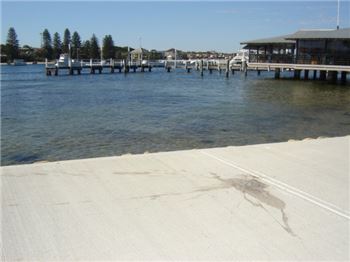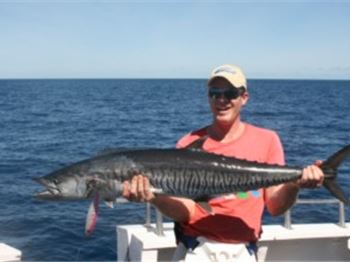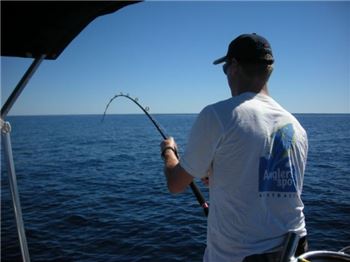Weta Fishing
My involvement with sailing has always been a little fishy. Rod in hand I would ponder the aching unfairness of life as I watched fish jump dozens of metres out beyond my casting range. Then along came Pixie, a 14ft Catamaran that got me out among them. I also learned the basics of sailing through trial and error. I also soon realised that passing both a tiller arm and a fishing rod around the back of the main sheeting system with each tack, while ducking under a boom low enough to challenge a contortionist, soon lost its charm.
Lasers followed on my experience curve. This time I learned that having the main sheet and a hand fishing line swirling in the cockpit is not advisable. The nylon that so easily slips out out your hand when a Trevally strikes will latch onto the mainsheet like a leech. The consequence of having the loose end of the mainsheet dissapear to leeward as you have to hike rapidly in the opposite direction to counter the unexpected hardening up of the sails in a 2ft chop, is not pretty.
Next followed 16ft beach cats. With these I could mount pipe style rod holders attached parallel to the side stays. A reasonable solution, so long as you didn't have to tack and didnt mind watching your rod thrash around on the loose leeward stay. An unplanned tack on a beach cat in order to get over to the rod side of the boat usually gave the fish enough slack line to create mahem. The springy trampoline also introduced some unwelcome variables to removing hooks from hyper-active barracuda.
Next followed 16ft beach cats. With these I could mount pipe style rod holders attached parallel to the side stays. A reasonable solution, so long as you didn't have to tack and didnt mind watching your rod thrash around on the loose leeward stay. An unplanned tack on a beach cat in order to get over to the rod side of the boat usually gave the fish enough slack line to create mahem. The springy trampoline also introduced some unwelcome variables to removing hooks from hyper-active barracuda.
Then one day a stealthy grey covered object arrived in the clubs boat yard. Speculation was rife. It was near dusk when I crept over and somewhat furtively lifted the rear of the cover. I stared in amazement. The first thought that came into my mind was “My goodness, what a nice transom” . Please note that my observations were purely architectural. Here was a near flat, near vertical surface in just the right position. I made further exciting discoveries as I lifted the cover higher. There would be no conflict with the rudder and it could place a rod within arms length of the helm.
A rapid round of phonecalls and emails followed on from my discovery and I was a little in awe to end up with a container full of Weta's heading to me. All have gone to good homes and container two is now on its way. Several versions of rod holders have been constructed from readily available materials. While the initial models work well, a production version would probably benefit from thicker and softer foam backing that could better mould into the true curves of the transom. Webbing cinch clips might also look a little more attractive.
The proof of concept came during the week with an 11 kg queenfish. This took a 5 inch plastic squid lure on 20lb dacron with 40lb nylon leader. The Queen is quite the acrobat with several good leaps and a number of dives to the bottom. I found I could play it easily by unclipping the main and just keeping a little headway on with the jib. Tacking to keep the fish behind the boat seemed fairly easy though not quick. The fish came to the boat after a 30 minute fight and I was able to ease it over the rudder bridge and into the cockpit. Larger fish could probably be handled by lifting the head from the water and putting them on a stringer attached to the rear beam. Likewise for my preferred style of catch and release, it should be relatively easy to lift the head of a fish with the leader, then disengage the hook while holding through the gills with the other hand.
When ever the wind is too light for fun sailing, I will keep innovating in this area and posting news as it comes to hand.











